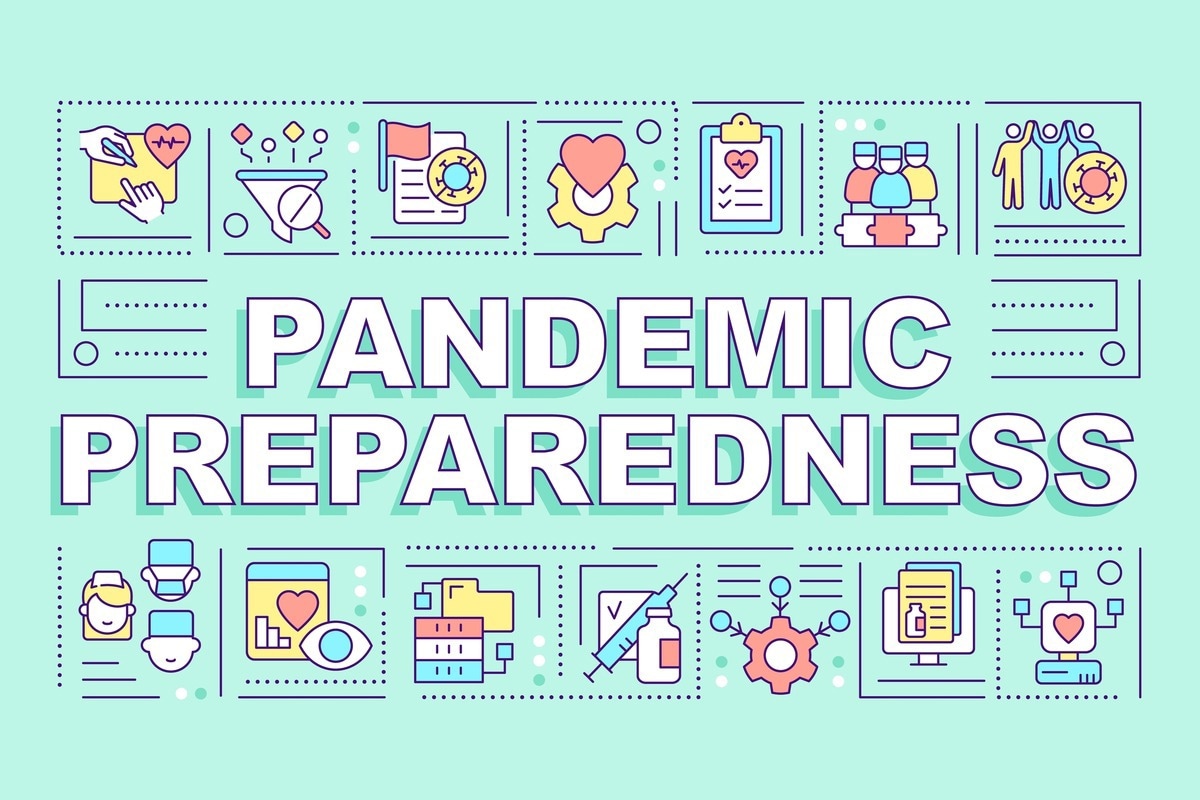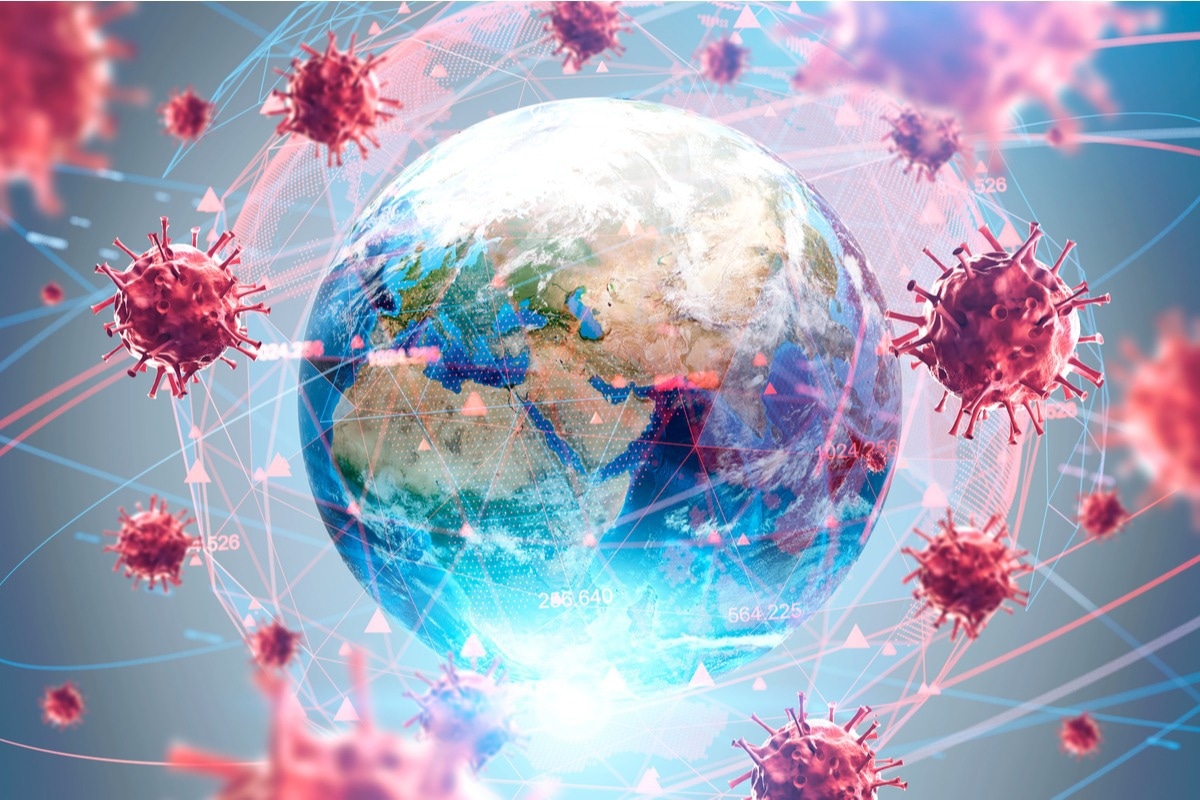The emergence of infectious disease
Are we prepared for a pandemic?
How can we be better prepared?
To sum up a brief discussion on pandemic preparedness
References
Further reading
The prospect of any pandemic outbreak arising in the future poses an obvious major and immediate threat to human life across the planet. How can a disease outbreak caused by either known or emerging novel pathogens be better detected and controlled next time? What lessons have we learned thus far from a global encounter with SARS-CoV-2, the causative agent of the COVID-19 pandemic, that has shaken the world as we know it since 2020?

Image Credit: bsd studio/Shutterstock.com
Are we now better prepared if a similar outbreak should occur again in the future? This article considers why we need to be prepared for a future pandemic, where we are now in the preparedness stakes, and where we need to go.
The emergence of infectious disease
According to the Department of Health and Social Care UK several factors are implicated in the risk of emergence of infectious diseases: population increase, urbanization, increasing global mobility, climate change, and changes in food and agricultural systems. These drivers of disease emergence look set to continue and intensify.
Are we prepared for a pandemic?
Epidemiologists and experts in biosecurity and public health have been immersed in preparedness planning for more than 20 years now. The key elements comprise surveillance for the detection of pathogens, data collection and modeling to measure the spread, raising public health awareness, and, finally, the development of therapies and vaccines. The public health risk posed by epidemics and pandemics gives rise to a critical and ongoing necessity to systematically assess global preparedness.
National governments sit at the forefront of defense regarding mounting a response to a disease outbreak. Aside from these, the WHO Health Emergencies Programme (WHE) is working to foster preparedness for large-scale outbreaks and pandemics. Frameworks for measuring preparedness are the WHO International Health Regulations (IHR) Core Capacity Monitoring Framework and the Joint External Evaluation (JEE). These have markedly improved our understanding of what preparedness entails in the context of threat mitigation.
Although there has been significant investment in global health surveillance, large parts of the planet nevertheless remain ill-equipped to respond to new and emerging threats. The COVID-19 pandemic demonstrated that the world was even less prepared than most people had realized. To be better prepared for the next time, the strategies in place to deal with such a catastrophic event as the emergence of the SARS-CoV-2 virus need an overhaul. This comes at the behest of many leading scientists: it is not yet a reality.
How can we be better prepared?
Among the considerations for better pandemic preparedness is improved surveillance, addressing economic and social inequality, and improving access to medicines and vaccinations.

Image Credit: ImageFlow/Shutterstock.com
Improved surveillance
For one thing, systems of surveillance could be much sharper. The Ebola epidemics were around for about a month before the disease was detected, and a similar story abounds for the SARS-CoV-2 virus that first emerged in the Chinese city of Wuhan. Once an outbreak moves beyond a contained area, it becomes exponentially harder to control.
In response to such a threatening scenario, the (then) recently formed WHO 1952 embarked on the Global Influenza Surveillance and Response System. This has since proven effective in warning scientists about a looming H5N1 avian influenza and the rising incidence of resistance to certain antiviral drugs. But what about novel pathogens? How easy is it to detect these?
Novel pathogens are more difficult to detect and monitor though advancing genomic-sequencing techniques have made open-ended searches viable. At the African Center of Excellence for Genomics of Infectious Diseases in Nigeria, scientists now can survey patient blood samples for foreign DNA and RNA. This availability of this technology enabled the detection of an unrecognized outbreak of yellow fever back in 2017.
Several influential scientists are now calling for surveillance of this sort to be expanded across the globe and particularly in places where people find themselves in proximity to pathogens ––forests, agricultural premises, and, of course, virology laboratories. Genomic technologies could also be utilized to detect airborne and water-borne pathogens. The technology is useful beyond the initial point of the outbreak and can be used to detect how far a pathogen has spread.
Addressing the challenges of inequality
Research has linked a higher incidence of COVID-19 cases and mortalities to income inequality across US counties. A vital aspect of pandemic preparedness then must involve addressing such inequality or, at the very least, it must encompass the implementation of strong corrective measures during a health emergency. But the difficulties of achieving such a feat are widely recognized.
Improving accessibility to medicines and vaccines
The pharmaceutical industry rapidly developed vaccines in response to the COVID-19 pandemic. It is recognized that early-stage work could be much expediated by increased funding. In response to this challenge, the Coalition for Epidemic Preparedness Innovations (CEPI) has devised a strategy to raise monies to aid vaccine development for novel diseases with an unprecedented target of just 100 days.
An Ant's Guide to Being Prepared | Pandemic Preparedness | Wellcome
As an alternative measure, Anthony Fauci, director US National Institute of Allergy and Infectious Diseases in Bethesda, Maryland, has called for the creation of ‘prototype’ vaccines. These would be targeted at around 20 key families of viruses and, in the case of an outbreak, would play a vital role in speeding up the development of a full vaccine.
To sum up a brief discussion on pandemic preparedness
In summary, future pandemic preparedness is essential if we are to find better solutions to potential outbreaks of either known or novel pathogens and to save future lives. Although international governments have already spent millions on preparedness, major challenges remain. If we are to deal with a pandemic in the future, then we need to look to solutions for intractable global challenges such as inequality and toward improvements in disease surveillance and vaccine availability for all.
References
- Department of Health and Social Care. 2020. UK pandemic preparedness–policy paper. Online: https://www.gov.uk/government/publications/uk-pandemic-preparedness/uk-pandemic-preparedness.
- Maxmen, A. 2021. Has COVID taught us anything about pandemic preparedness? Nature. doi: 10.1038/d41586-021-02217-y.
- Oppenheim, B. et al. 2019. Assessing global preparedness for the next pandemic: development and application of an Epidemic Preparedness Index. BMJ Global Health, 4 :e001157.
- World Health Organization. 2022. Preparing for Pandemics. Online: https://www.who.int/
Further Reading
Last Updated: Mar 11, 2023